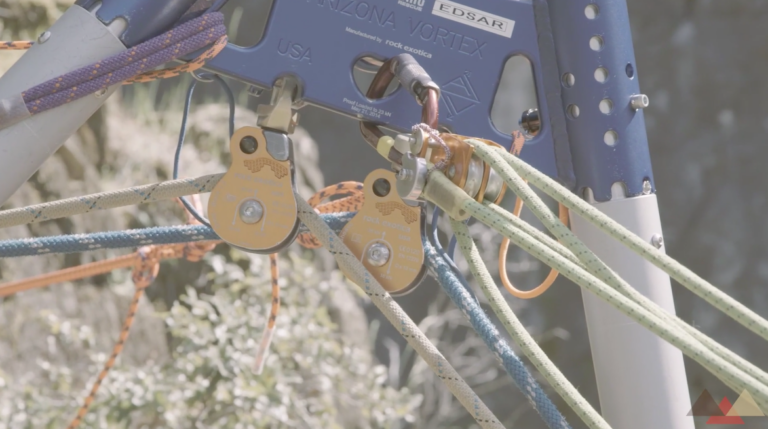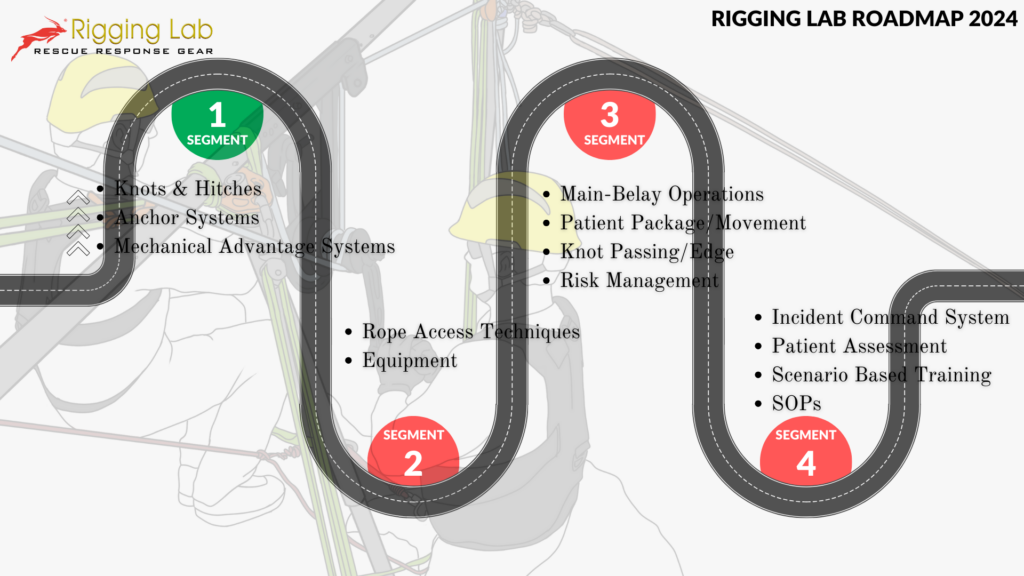Streamlining Rescue Operations: Dual AHD Systems for Efficient Trackline Offsets
In the dynamic landscape of technical rescue, the implementation of dual Artificial High Directional (AHD) systems to construct a trackline offset stands as a testament to both innovation and strategic planning. Our operation utilized two distinct and separate AHDs—an SA Frame for the two-tension working line and a monopod/gin pole for the tracking line—each playing a critical role in the execution of a meticulously designed rescue scenario.
The adoption of a Two Tension Rope System (TTRS) for the working lines underscores our commitment to safety and redundancy. This system, by virtue of its design, provides an enhanced safety factor, crucial for operations where risk mitigation is paramount. The utilization of a single tracking line, chosen for its simplicity and effectiveness, allowed for a precise and controlled descent, keeping the patient within a meter of the cliff face to minimize tension and maximize safety.
This operation’s success hinged on the meticulous setup and coordination between two independent systems, each operated from different positions—one from the top for lowering operations and the other from the bottom, also focusing on lowering. Such coordination required impeccable communication, especially given the physical separation of the teams, emphasizing the importance of clear and continuous dialogue for seamless operation.
Key Considerations for Dual AHD System Implementation:
- Strategic Working Area Selection: Choosing an appropriate location for setting up dual AHD systems is crucial, ensuring both systems work harmoniously towards a common goal while maintaining operational integrity.
- Optimal AHD Angles: The angles of the AHDs are vital for the effective execution of the operation, influencing both safety and efficiency.
- Proper Guying Techniques: Correctly angling the guying systems for each AHD ensures stability and reliability, essential for the smooth operation of the rescue.
- Synchronized Team Communication: Maintaining open and effective communication channels between the top and bottom teams is indispensable, particularly when visual contact is not possible, to facilitate a coordinated and successful rescue.
The utilization of dual AHD systems in this rescue operation exemplifies the potential for technical innovation in enhancing rescue capabilities. By carefully considering the setup, operation, and coordination of these systems, rescue teams can achieve a higher level of efficiency and safety, making challenging rescues more manageable and successful. This approach not only showcases the adaptability of rescue techniques to specific scenarios but also highlights the ongoing evolution of rescue operations towards greater precision and reliability.
Peace on your Days
Lance










